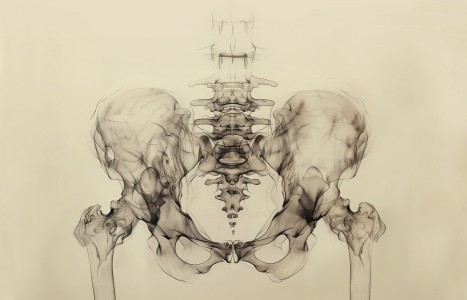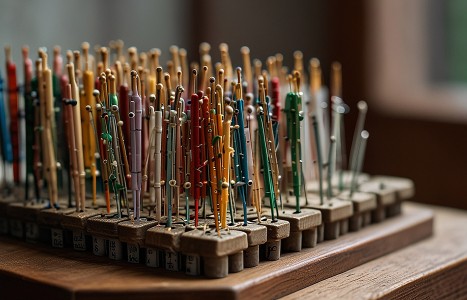People today want convenience, whether it be from their bank, credit card, favorite retail store, or restaurant. They demand it from the companies who hold their loyalty, including their health care providers (you). They don’t want to call and possibly be put on hold, and they want to use an app or schedule an appointment on your website. Here are three reasons your practice can gain by switching to online appointment scheduling.
Innovative Models of Care
As our dynamic profession continues to evolve in the U.S., unique models and approaches to treatment develop. Their hardiness, effectiveness and resilience are being tested in a variety of settings, such as rural, medically underserved areas, as well as in urban communities searching for models that emphasize wellness.
These models often exhibit hybridized services and settings related to the fusion of traditional Asian medicine clinics with contemporary treatment venues. Many of these innovative models draw on the example of offering treatment to individuals in the context of group settings.
Working Class Acupuncture (WCA) in Portland, Ore., came to our attention because of its commitment to "provide accessible acupuncture and wellness resources ... that empower people, build community, and break down class divisions." As health care costs continue to skyrocket in this country, the clinic promotes the position that "acupuncture may represent an affordable and accessible option." Designed on the basis of a low-cost, high-volume practice model, WCA is enthusiastic about sharing its methods and philosophy. Lisa Rohleder, LAc, the current executive director of the organization, and Skip Van Meter, LAc, founded WCA as a nonprofit agency as part of their desire to participate in and foster the "qi of community ... the presence of a collective energetic field that makes individual treatments more powerful."
We interviewed Lupine Hudson, director of resource development for the agency. Addressing our question regarding how the model was created, she responded, "Acupuncture is incredibly flexible; it can adapt to all kinds of settings without compromising its quality. We feel that the essence of acupuncture is radical simplicity - needles, cotton balls and stillness. You can provide the most elegant, streamlined and beautiful treatments without ever using moxa or back points, though we do use those things when we feel there is a need. The point is that there's never only one way to do anything. Acupuncture has been practiced for millennia in Asia in community settings; that tradition is beautifully suited to the needs of working-class patients in America today."
Ms. Hudson explained that WCA offers a patient-centric model that supports empowerment. Clients respond well to "the routine, the familiarity, and effectiveness of treatment. Most patients come on a weekly basis." WCA's patient retention and rescheduling rate is high, estimated to be around 90 percent. Although she is not an acupuncturist, Ms. Hudson states that her role is to bring WCA's "ideals and ideologies down to earth with some good old-fashioned structure and organization." Her goals are to promote acupuncture for the benefit of patients, and to influence how acupuncturists think about their communities.
Treatments are offered on a sliding scale, with costs varying from $30 to $65 for an initial visit and consultation; return treatments range from $15 to $35. WCA's business model is designed to be sustainable for both clients and providers, and is related to promoting accessibility and affordability of treatment; the community aspect emphasizes the mutual relationship of both the patient and acupuncturist to society. Ms. Hudson explained that one of WCA's goals is "to en-courage acupuncturists to reconnect with their community through a supportive, sustainable business. A patient-supported practice is key."
Elements of WCA's model incorporate group-style treatments that use an approach to care based on using distal points. Acupuncturists use a form of the Japanese method of pulse diagnosis known as jingei. Clients receive treatment while sitting in recliners in a large, quiet and comfortable room. Effects of shared treatment result in a synergy that affects both clients and providers.
Logistics of the clinic involve scheduling patients every 10 minutes, with new patients receiving two 10-minute slots. A front-desk reception person greets clients and handles all of the aspects of rescheduling appointments and receiving payment. The clinic has 15 recliner chairs; clients settle in by selecting a seat and removing their shoes and socks. A practitioner joins each client, "checks in" regarding their current health status, and inserts the needles. Following treatment, tea is available, and a resource center offers a place to relax or visit the library. The group offers classes on health practices, exercises, and other educational activities. Currently, the clinic employs two full-time acupuncturists and three acupuncturists on a part-time basis.
When asked about the intake process and confidentiality, Ms. Hudson and Ms. Rohleder responded as follows: "Our intake process goes like this. Patients come in early and spend 45 minutes or so filling out a lengthy health history and signing all our various policies. On the first sheet of the health history is a list of the top three conditions they want to have treated. If any one of those items looks sensitive, the acupuncturist will take the patient to a more private area to discuss it. Acupuncturists review the health history at a later point during the clinic shift and don't discuss it with the patient in the group setting, which is one way of protecting confidentiality. When issues need to be discussed, the acupuncturist can schedule extra time to do this in private, or have a phone conversation at a later time. Acupuncturists observing our clinic have commented that between the fountains, the music, the white noise machines and the occasional snoring, you really can't hear anything that anyone says to the practitioner. Patients are very respectful of each other and of the shared space."
WCA will be sponsoring a conference in October 2006 to share various aspects of their model, including creating community partnerships, developing successful business plans and describing jingei pulse diagnosis. The group can be contacted at info@workingclassacupuncture.org.
Just as qi is a dynamic and ever-changing force of nature, the evolution of Asian medicine in the U.S. continues to adapt creatively to the diversity and multiplicity of practitioners and practice settings in which it is implemented. Our field is definitely one that resists stagnation, and instead fosters expansive, unrestrained and enthusiastic growth and development designed to enhance the public's health and well-being.


